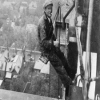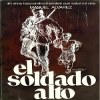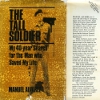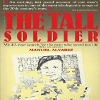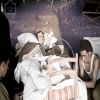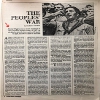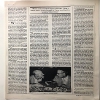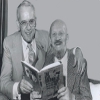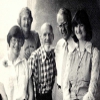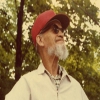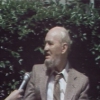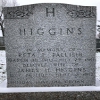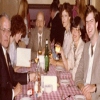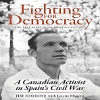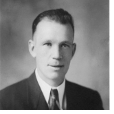
At the end of July 1938 the war reached Corbera d’Ebre. It arrived by air. The inhabitants already knew that this form of war existed. In the small town there were many refugees from Tarragona where they were already experienced in the face of the air raids of the German and Italian planes that supported the national side. But there were no air shelters in Corbera. What need? Why would they bomb this small town of barely 2,000 inhabitants?
Manuel Álvarez was 11 years old and was one of the displaced. He had been hiding from the bombs in the town for several months, which, since the beginning of the conflict, were around him in the province's capital. His parents sent Corbera with his uncles so he was safe. Without knowing it they had sent him to the heart of one of the most important battle fronts of the Civil War.
The air superiority of the rebellious side broke the republican lines without distinguishing between civilians and military. The town was taken over by the nationals and then recovered by the Republicans. That July Manuel woke up to the sound of the bombers determined to reverse the advance of the Republican troops. His uncle Ramon made sausages for breakfast, the boy was not hungry but his uncle insisted that he eat a lot because they were going to need it. "I have a feeling it’s going to be a very long day today", Ramon said.
And so it was. The bombs began to wipe out the houses in the village, one after the other. The neighbors gathered at their uncles' house because it had very strong stone walls. But they did not resist. Manuel escaped from his uncles' home along with Rosita, a local girl with whom he shared luck during the bombing. After hiding places, they were able to get away from the village, but the bombs were still falling. Following the path that goes to the village public wash, they took refuge in a hut next to Corbera’s water tank. There they hid among the diesel engines of the pumps that were used to draw water from a well. "They’re chasing us right here!", shouted Manuel. And then the brick hut fell on their heads and Manuel felt he was buried under the rubble. But everything began to move around at great speed. The town’s water reservoir had been destroyed and now the water was dragging it in the middle of a quagmire.
The next thing Manuel remembers, and reflected in his memoir “The tall soldier”, is that a man grabbed him, pulled him out of the stream and carried him on his shoulders to the village. The little wounded man asked for his friend Rosita and the soldier said only two words in Spanish: "I’m a Canadian". He was a brigadier of the Mackenzie-Papineau battalion, made up of Canadian volunteers and integrated with other units of foreigners, such as the Abraham Lincoln of the American Brigade, into the fifteenth battalion of the International Brigades.
His name was Jimmy Higgins, but Manuel couldn’t know that until four decades later. From his rescue he only remembers that he was transferred to a winery in Corbera that had become a relief center. From there he was taken to the cave of Santa Lucia, in the town of La Bisbal de Falset, where the Republicans had improvised a field hospital and to which the wounded were taken from nearby localities affected by the Battle of the Ebro.
In his book he barely reflects some of the details of his visit to the field hospital, where he spent several semi-conscious days and was again transferred. He didn’t know he’d been photographed by Wainman. At the time Alec Wainman took the photo of Manuel Álvarez in the cave he was in the Ebro working for the Republic as Press Secretary. His son Alex has compiled the photos of Wainman in the volume Almas Vivas (Editorial Milenio) under the pseudonym of Serge Alternês. The images came to him through a friend of his father who had recovered the photographs of the home of a retired and deceased publisher from Soho, who had kept them in a briefcase. Alternês wanted in this book to approach the figure of his father as a character, not as his parent.
The day he was wounded was the longest day of his life, as his uncle had predicted. And it marked him forever. Rosita died and it was recorded in her memory forever that a tall man from Canada had saved her life. When he was reunited with his family, his father began the search for the Canadian. "We must do everything possible to know the name of the soldier who saved your life". And his father’s desire became Manuel Alvarez’s life obsession.
Manuel joined the Spanish Navy where he graduated in 1957. At the age of 25 he joined the Norwegian merchant navy and spent seven years of his life from port to port learning all kinds of trades with the aim, ever present, of obtaining the entry permit to live in Canada.
When he did, he searched for the soldier for years, contacting groups of ex-combatants. He lived in Quebec and Vancouver where he moved in with his wife Victoria and had a daughter, Vicky. He set up a thriving car sales business and obtained Canadian citizenship in 1963.
In January 1978 he received a call from Lionel Edwards of the veterans group of the Mackenzie-Pampideau battalion.
- Manuel I think we found your man.
The Mac-Pap that had saved his life, Jimmy Higgins, lived in Peterborough, Ontario. On May 19, 1978, thirty-nine years, nine months and twenty-one days after his life was saved, Manuel met Higgins.
When Manuel Álvarez called the Canadian on the phone, the story squared: he was the tall soldier and the child turned into an adult was going to see him. Jimmy Higgins was 71 when he received a visit from Manuel Álvárez. "I didn’t believe in miracles, but now I do", he told the Canadian press when the May 19, 1978 meeting with Manuel Alvarez took place. Forty years after his visit to Corbera d’Ebre, the former brigadista remembered having taken a child out of a torrent of water on the front of the Battle of the Ebro, but he had no idea of the name of the locality.
After all, saving a child was nothing more than an anecdote in the midst of his traumatic experience of a war that had been left behind and only remembered by former combatants who had received only contempt from the Government canadian.
In the epilogue to his book, Manuel Álvarez highlights the bitterness of those ignored ex-soldiers whom he got to know well in his search. Manuel was very grateful to Canada for opening its doors to him, "but this gratitude does not diminish my revulsion at the attitude of successive Canadian governments towards the Mackenzie-Papineau battalion", he said.
Álvarez offered his book and his person as living testimony that the work of the brigadistas had been worth it. With the publication of his book, today discontinued, he had fulfilled his part, he had fulfilled his father’s promise. His father sought out the soldier who had saved his son, to thank him, without success.
"I remember the circumstance in which I saved a little boy when I retired. It occurred in one of the many villages or villages through which we passed or stayed for a short time in one of the towns near the Ebro river
(...)
José and I were standing where the villagers had a water reservoir, it was here that a plane made a direct impact on the reservoir. Right after the explosion was when Jose noticed that someone was being swept away by the current originating from the destroyed water reservoir. I took off my hood and told José to hold the three hand grenades and to keep the machine gun safe and I got into the water stream trying to catch a boy of about 12 years of age.
After a few minutes I managed to drag him to the shore, however the boy could not walk because of the injuries he had received in the legs I carried him to the cellar while the boy received the first care in order to be able to transfer him to a hospital of the rear ".
This story by Jimmy Higgins belongs to an unpublished manuscript collected by Manuel Álvarez in "The tall soldier" and shared by the brigadista with other Canadian volunteers. The text was key for Spanish to find it. Through a circular from the association of ex-combatants that spoke of the search for Álvarez several brigadistas acknowledged having read the episode in a Higgins writing.
Who was Captain Medina?
"Captain Medina was the kind of officer that soldiers dream of sending them, but they rarely do. He had been in some difficult situations with him, and we saved each other’s lives more than once. He would later become the chief intelligence officer of the brigade. I will always consider him the best officer I had with me in the battle ". Jim Higgins
Here you can see a small video of the meeting. |
More information in: Janette Higgins: Author-Editor |


